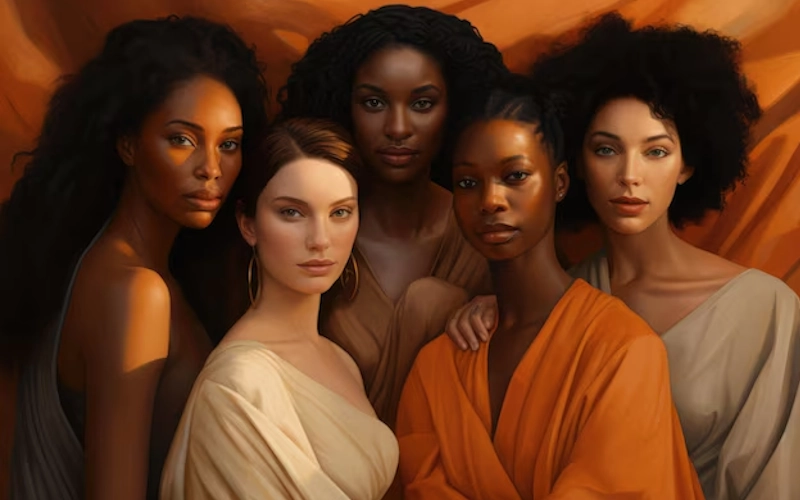Introduction
There are the most incredible physical looking types of people worldwide that will most possibly catch your eyes and at the same time can be compared to beauty standards. In the vast catalogue of these glorious and unique attributes, extreme proportions of the glutes in African women(as long as bottom can be, and still be respected) have reached far into the consciousness, invoking discussion of genetics, culture, body aesthetic. This absurdity even materialized into Unusual Award n.13, a record that includes those who were just born with such reliable physiques.
The following article comes from an article that strives for the psychological, emotional, and even ethical context of the extreme proportions of glutes, how certain groups praise them, and other more cultural and scientific considerations.
Extreme Buttock Proportions: The Science
In African women, very large gluteal proportions are notably attributable to genetic causes, particularly steatopygia, which is a condition associated with the deposition of large fat stores in the area of the buttocks. It is most frequently found among women of certain African ethnic groups, like the Khoisan and Bantu groups.
Central genetic and physiologic indices:
Steatopygia: An inherited trait that causes significant adiposity in the gluteal region, seen as an evolutionary trait for fat storage and energy use.
Hormonal effect: Estrogen increases is higher in the body that accumulate fat in the area of hip and buttocks and to form curvature.
Healthy Eating Patterns: Also, many Africans used to eat naturally without some processed foods and had an active lifestyle pattern compared to the west, which also contributed to body shape.
Although genetics is the main factor, diet, lifestyle, and general health also influence the proportion of your body.
Significance and Aura of the Culture
In many African cultures, focused gluteal proportions are seen to be signs of fertility, beauty and strength. This reverence is reflected in historical artifacts, traditional dances, and folklore that extol curvaceous figures.
Cultural Appreciation Examples:
African Art & Sculptures: Sculptures and carvings from Africa often feature women who are curvy, conveying cultural importance.
Traditional Dance Forms Dance styles like the South African Gwara Gwara and West African Azonto feature moves that showcase gluteal prominence.
Marriage and Fertility Beliefs: In parts of Africa, being fuller figured signifies fertility and good health which is seen as a desirable trait in a marriage.
In contrast, contemporary global culture presents a transformed notion of body proportions. While some celebrate such exaggerated gluteal proportions as a heroic aesthetic, others warn of body image pressures that social media have made worse.
The Rise of Over-the-Top Glutes in Media and Pop Culture
In the context of digitalization and the social media age, the cult of the extreme gluteal remains strong. Many celebrities, influencers, and fitness models will find their iconic curves. Garnering thousands upon thousands of ”likes,” which only serves to increase the desirability associated with this biological variation.
The Social Media & Pop Culture Influence:

Datoja Media: Instagram & TikTok Trends Angle: Viral challenges promoting full-figured body types have become common, perpetuating beauty philosophies.
Celebrity Influence: Mainstream attention on curvier aesthetics was brought by convenience with fashion. And celebrities like Kim Kardashian and Nicki Minaj.
Surgical Enhancements: Rising demand for surgery such as the Brazilian Butt Lift (BBL). Is indicative of a social shift towards large gluteal proportions.
Though they may be revered, there are still deep concerns about body modification surgeries, unrealistic beauty ideals and health risks.
The Unusual Award n.13: Best Strain
The Unusual Award n.13 is one of a class of awards recognizing exceptional physical traits. Unlike traditional beauty awards. This award seeks to highlight natural and extraordinary features that individuals may not find on other people.
Criteria for the Award:
Natural Gluteal anatomy: Participants cannot have surgical enlargements.
Representations of Heritage and Culture: Focus on people from communities in which this quality is historically common.
Positive Impact: Spreading body positivity and self-love.
The award is fueling conversations about embracing body diversity. As well as general concepts of beauty that go beyond Westernized standards.
Challenges and Controversies
The phenomenon is, for the most part, a positive embrace of extreme gluteal proportions. But it carries with it controversy and complication, as well.
Potential Concerns:
Health Implications: Too much weight in certain parts of the body can result in back pain that may make it difficult to move around.
Body Parts: The focus on specific body types can sometimes objectify individuals instead of celebrating them in their entirety.
Social Pressures: Younger women may be pressured to extreme diets, workouts or even surgery to achieve a specific appearance.
It will take a sensitive approach that encourages health, self-acceptance, and appreciation for culture without making unreasonable demands.
Conclusion
Note : Extreme Gluteal Proportions in African WomanThe Unusual Award n.13 Though genetics are vital in determining body shapes. The perceptions of beauty changes with cultural appreciation, media images, and society conventions.
We must embrace diversity, with body positivity, an informed approach to health and an appreciation of natural beauty. Instead of following strict guidelines, being true to yourself is the best way to express yourself.



![[9 June 06:37] Private Show Bella Nasty: The Evolution of Online Private Shows](https://businesstips.com.in/wp-content/uploads/2025/04/unnamed-3-150x150.png)